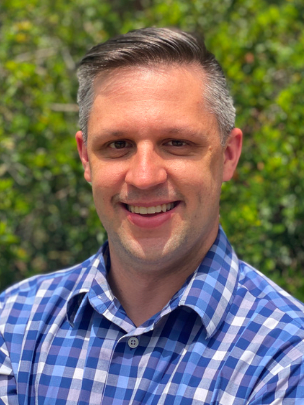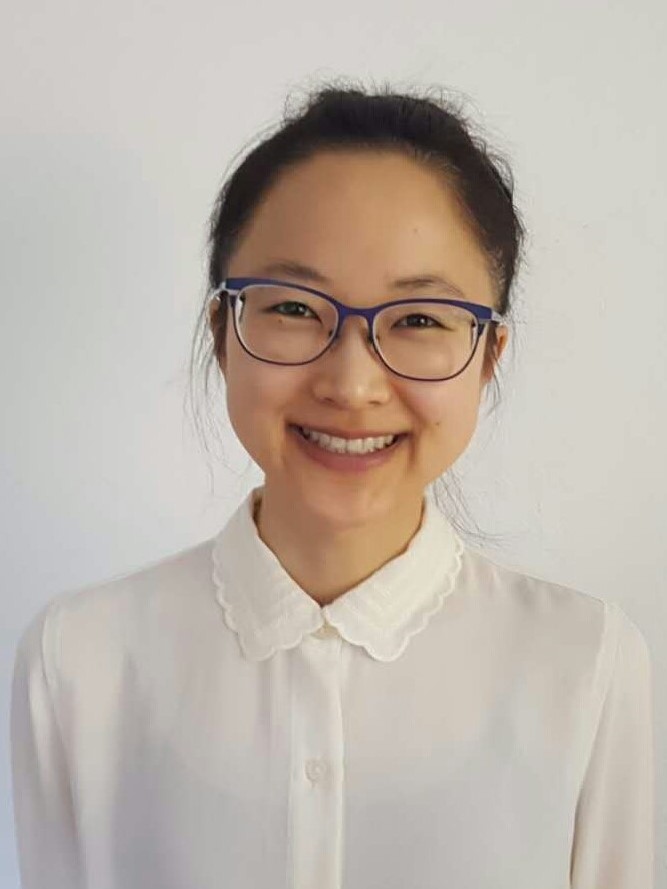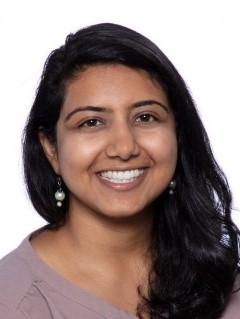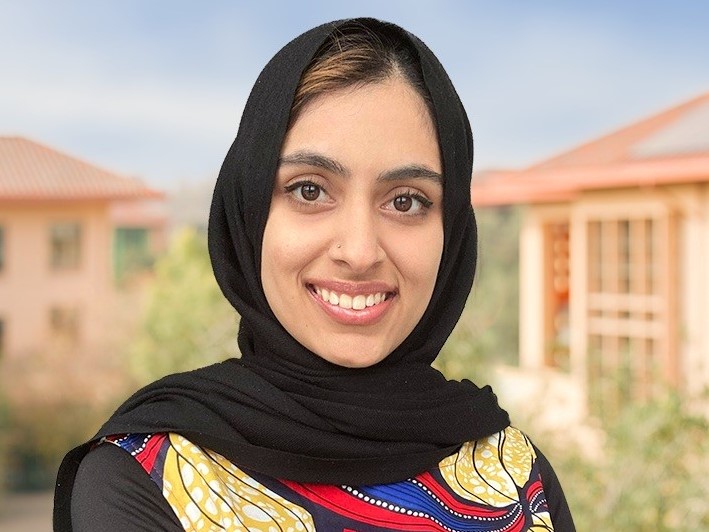
Introducing the 2022 Research Impact Challenge Winners!
Please join us in recognizing the five winners of the 2022 Research Impact Challenge!
Missed the challenge this year? You can continue to take advantage of the 2022 challenges via the Research Impact Challenge webpage. For more information on the use and assessment of research metrics, please visit the Research Impact Guide.
Get to Know the Winners


Ananya Goyal is a third-year Ph.D. student in the Department of Bioengineering. Her research focuses on using PET and MR imaging modalities to study diseases such as knee pain, which impact the day-to-day life of people. She is advised by Dr. Feliks Kogan in the Department of Radiology. She is also a part of the School of Engineering’s Dean’s Graduate Student Advisory Council, working to establish a standardized mentoring program across engineering departments to support students in transitioning to graduate life. She received her B.S. in Biomedical Engineering from the University of Rochester in 2020.
Greg Muller, DO is an Emergency Medical Services Fellow with the Department of Emergency Medicine at Stanford Medicine. He did undergraduate work in Philosophy at the University of Puget Sound and received his medical degree from Touro University California. Before medical school, he worked as a Paramedic in Central California. While his primary focus is on prehospital education and systems improvement, he has previously done research on COVID-19, prehospital care outcomes, and plans to develop further research on the education of prehospital clinicians and delivery of care.


Hope Leng is a second year PhD student in the Bioengineering Department. As a member of the Prakash Lab (Advisor: Dr. Manu Prakash), Hope engages in global collaborations and capacity-building to make community and clinical tools more accessible. Her current research focuses on scalable, open access molecular diagnostics for various neglected tropical diseases. Through research trips to low and middle-income countries–as well as locally through educational outreach programs like FAST (Future Advancers of Science and Technology)–she hopes to empower communities to be curious about the world and be inspired by the deep connection between human and planetary health–both of which are worth nurturing and protecting.
Ria Pal, MD is a child neurology resident at Stanford who has received her B.S. in neuroscience and medical degree at the University of Rochester. Her scholarship has focused on health justice, medical education, and neuroplasticity.

Zahra Fazal, from Morogoro, Tanzania, is pursuing a master’s degree in epidemiology and clinical research at Stanford School of Medicine as a Knight Hennessey scholar. She graduated from the University of British Columbia (UBC), Canada with a bachelor’s degree with distinction in Global health and nutrition as a Karen McKellin International Leader of Tomorrow scholar. Zahra plans to apply her graduate degree towards researching health inequities amongst under-served populations and advocating for data-driven policy change within Sub-Saharan Africa. Zahra was also a research assistant on a patient-partner project at Arthritis Research Canada investigating COVID-19 outcomes in patients with immunosuppression within Canada. Zahra has received the UBC Dean Blythe Eagles Medal, UBC International Community Achievement Award and is a 2022 Rhodes East Africa finalist.
Takeaways from the Research Impact Challenge
Which challenge did you find the most helpful?
Ananya Goyal: I thought the first challenge was the most helpful as it was a great motivator for me to start setting up professional profiles on many of the platforms used to share research. I find that the first step is the hardest, and now that I have all my accounts set up, I will have a much easier time going further with them.
Greg Muller: I think the most helpful challenge was setting up my Google Scholar account. I didn’t know it was a resource I could use to track my own research accomplishments in addition to searching for published works, so getting that set up was helpful.
Hope Leng: The first challenge–to claim professional profiles–was the most helpful challenge for me. When I am curious about an author or researcher, I tend to look them up on ORCID iD, Google Scholar, or other research-related platforms, but I never thought to create my own professional profile to allow others to search for me. Today, visibility is connected to searchability, and research has the greatest impact when it is available to everybody for feedback and collaborative improvements.
Ria Pal: The research data management day – I will definitely be using DMPTool moving forward.
Zahra Fazal: One of the most helpful activities was filling out the self-inventory. I found it especially useful to compare and contrast ways in which I rated the value of my scholarly work to ways in which others may do that. This allowed me to see what I valued in research and through that, I was able to reflect on how best I can center these values in the work I do especially being mindful when working alongside communities or vulnerable populations
What is your biggest takeaway from the Research Impact Challenge?
Ananya Goyal: My biggest takeaway from the challenge was really understanding the meaning of research impact, and how, as a researcher, I can influence how my research is perceived by others.
Greg Muller: That there’s a lot more resources available from Lane library than I initially expected.
Hope Leng: My biggest takeaway is the variety of ways that researchers can control their influence/impact. There are numerous ways to have your voice be heard, see who is listening, and make them curious to find out more!
Ria Pal: To not reinvent the wheel by becoming familiar with established templates, relevant web apps, and our librarians’ expertise.
Zahra Fazal: Overall, the key learning emphasized by participating in the research impact challenge was the importance of understanding different tools to manage and communicate research. I learned new ways in which I can organize my research as well as how to understand research quality through metrics and set citation alerts to track the uptake of the research. These skills were important to me as a new graduate student and an aspiring epidemiologist from Tanzania
Check Out Their Research
Ananya Goyal:
Goyal, A., Beaulieu, C., Fung, M., Kolupar, T., Chaudhari, A., Stevens, K., & Kogan, F. (n.d.). (ISMRM 2022) Comparison of New MR Approaches for Accelerated Knee Imaging [Conference Proceedings]. ISMRM. Retrieved September 27, 2022, from https://archive.ismrm.org /2022/1691.html
- This study evaluates the performance of novel accelerated knee magnetic resonance imaging (MRI) protocols that reduce scan times and potentially add diagnostic value through quantitative data.
Goyal, A., Gold, G., Kogan, F., & Watkins, L. (n.d.). (ISMRM 2021) Changes in meniscus T2 relaxation times due to acute exercise in individuals with knee osteoarthritis [Conference Proceedings]. ISMRM. Retrieved September 27, 2022, from https://archive.ismrm.org/2021/4236.html
- The goal was to assess the effect of acute exercise on meniscus T2 relaxation times, which is a quantitative magnetic resonance imaging (MRI) measure, in individuals with knee osteoarthritis.
Greg Muller:
Illg, Z., Muller, G., Mueller, M., Nippert, J., & Allen, B. (2021). Analysis of absolute lymphocyte count in patients with COVID-19. The American Journal of Emergency Medicine, 46, 16–19. https://doi.org/10.1016/j.ajem.2021.02.054
Hope Leng:
Kudryashev, J. A., Waggoner, L. E., Leng, H. T., Mininni, N. H., & Kwon, E. J. (2020). An Activity- Based Nanosensor for Traumatic Brain Injury. ACS Sensors, 5(3), 686–692. https://doi.org/10.1021/acssensors.9b01812
- This activity-based nanosensor for rapid diagnosis of traumatic brain injury offers a more nuanced assessment of biological activity in the brain after the initial mechanical impact, allowing for more personalized and immediate clinical care and possibly improving patient outcomes. (Kwon Lab, UCSD)
SnapDx, https://www.snapdx.org
- SnapDx is a low-cost (< US$1), equipment-free, and electricity-free molecular diagnostic to decentralize healthcare in low-resource communities, allowing community health workers to administer the same quality of healthcare as general hospitals. (Prakash Lab, Stanford University)
Zahra Fazal:
Ackah, B. B. B., Woo, M., Stallwood, L., Fazal, Z. A., Okpani, A., Ukah, U. V., & Adu, P. A. (2022). COVID-19 vaccine hesitancy in Africa: A scoping review. Global Health Research and Policy, 7(1), 21. https://doi.org/10.1186/s41256-022-00255-1
- This rapid review summarizes the literature on COVID-19 vaccine hesitancy in Africa and investigates the factors associated with the varying attitudes towards COVID-19 vaccination.
Avina-Galindo, A. M., Fazal, Z. A., Marozoff, S., Kwan, J., Lu, N., Hoens, A. M., Kopec, J., Lacaille, D., Xie, H., Loree, J. M., Avina-Zubieta, J. A., & Team, on behalf of the S. (2021). Immunosuppression and COVID-19 infection in British Columbia: Protocol for a linkage study of population-based administrative and self-reported survey data. PLOS ONE, 16(11), e0259601. https://doi.org/10.1371/journal.pone.0259601
- This paper outlines the protocol for a population-based study that links administrative health data with self-reported survey data to understand the risk and outcomes of COVID-19 in patients with various forms of immunosuppression across the province of British Columbia, Canada.
Thank you to everyone who participated in our 2022 Research Impact Challenge! Lane Library can help year-round with your research impact questions. See our Research Services page for more information.